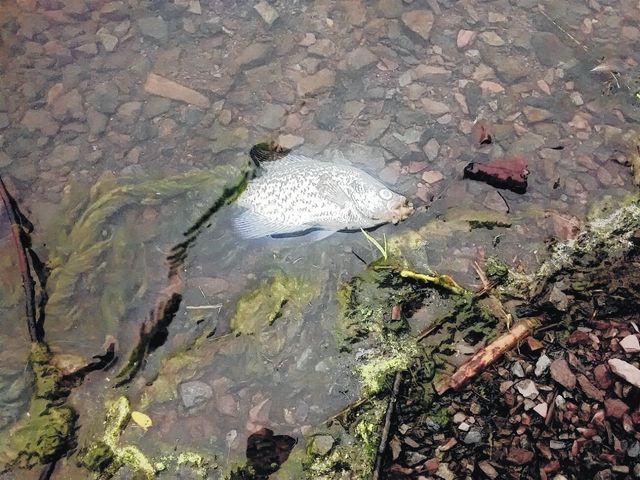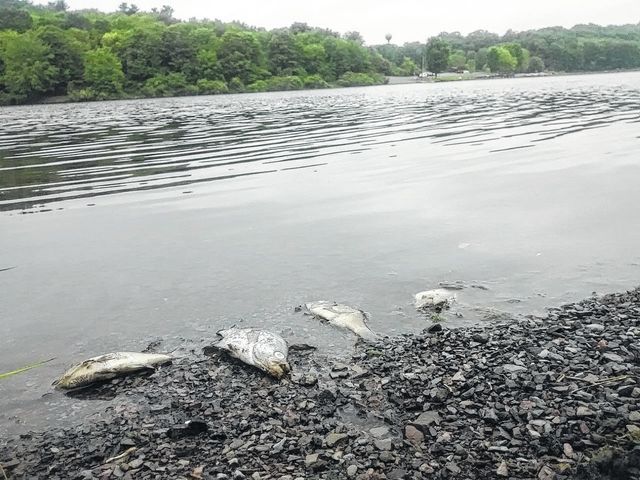Click here to subscribe today or Login.
KINGSTON TWP. — Dozens of decaying panfish littered the shoreline at Frances Slocum Lake, creating a perception that something catastrophic happened.
While there was indeed a fish kill at the lake last week, it was far from a catastrophe. In fact, the cause of the die-off of bluegills and crappie at Frances Slocum was actually a fairly common natural event.
Park manager Brian Taylor said roughly 1,000 fish – mostly bluegills and crappie, were found dead along the edge of the lake last week. Most of the dead fish were found on the west side of the lake, which is shallower, he said.
“Overall it’s a small number for the lake,” Taylor said. “We’re still seeing anglers catching plenty of fish.”
The fact that most of the fish were found in the shallow water is indicative of the cause of the fish kill. Pennsylvania Fish and Boat Commission Waterways Conservation Officer John Cummings investigated the incident and said the die-off was the result of spawning stress coupled with warm water and low dissolved oxygen levels.
“We had a warm spring and then sunny days which caused an algal bloom that resulted in low oxygen at the time the panfish were finishing spawning,” Cummings said. “They were already stressed from spawning, and the other factors added to it.”
While fish kills are often associated with a pollution event, Rob Wnuk, fisheries manager for the PFBC’s Northeast Region, said that usually isn’t the case.
The vast majority of fish kills Wnuk has encountered in his career are the result of natural events – spawning stress, winter kill, disease, toxic algae or sudden lake turn-over in the summer. In January 2015, a significant fish kill occurred on Harris Pond in Sweet Valley due to prolonged ice cover that depleted oxygen levels.
Die-offs from spawning stress are usually species specific because not all species spawn at the same time. If a die-off occurs from a pollution event it typically impacts every species in a waterway.
A few dead bass were found at Frances Slocum, and Wnuk said that’s not a surprise since they spawn at about the same time as panfish.
According to Wnuk, fish kills from spawning stress occur because the fish are weak with compromised immune systems when spawning. Any additional stressors during this time can push them over the edge, he said.
“A rapid change in temperature is a stressor because fish are cold-blooded and can’t regulate their body temperatures,” Wnuk said. “Additionally, warm water means less oxygen and greater bacterial populations.”
The good thing about the fish kill at Frances Slocum is it wasn’t significant, according to Wnuk. He has seen much larger fish kills over the years, and the larger the lake, the bigger the die-off simply because there are more fish, Wnuk said.
“While the Slocum kill this year is significant to people at an emotional level, it should not have a significant impact on the population,” Wnuk said, adding that he’s received about a half-dozen reports of fish kills this year, which is average.






